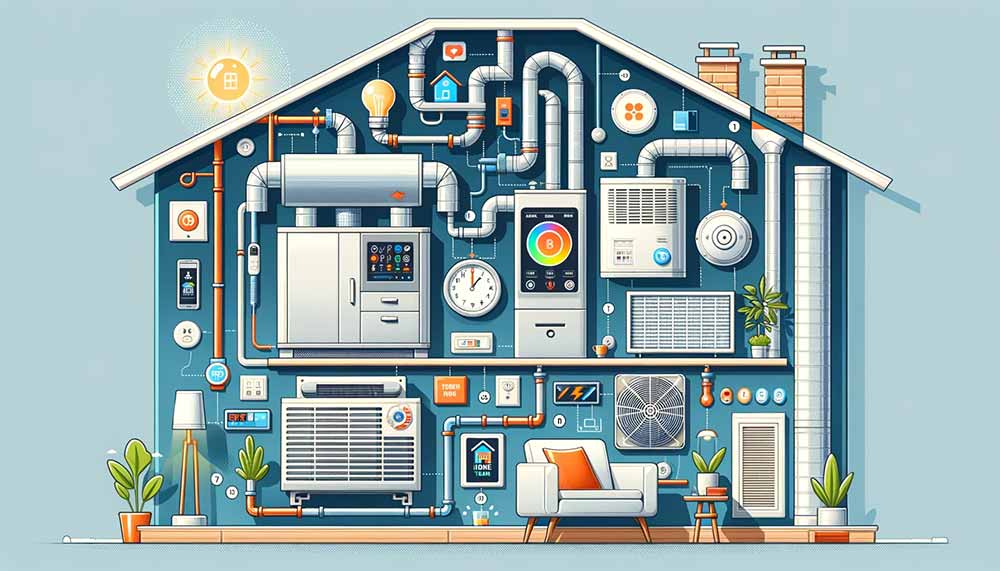Navigating the complexities of your home’s HVAC (Heating, Ventilation, and Air Conditioning) system can seem daunting at first. However, with a bit of guidance, homeowners can gain a basic understanding of how these crucial systems work, leading to better maintenance decisions, improved energy efficiency, and enhanced comfort. This article aims to demystify HVAC systems for beginners, focusing on their components, functions, and tips for maintaining optimal performance.
Key Components of an HVAC System
At its core, an HVAC system controls the temperature and air quality in your home. Here are the primary components you should be familiar with:
- Thermostat: The control center of your HVAC system, allowing you to set the desired temperature and control when heating or cooling is activated.
- Furnace: The heart of your heating system, the furnace heats air which is then distributed throughout your home.
- Air Conditioner: Operating on the principle of removing heat and humidity from indoor air, the AC unit ensures your home stays cool during warmer months.
- Ductwork: This network of tubes in your walls, floors, and ceilings distributes heated or cooled air throughout your home.
- Vents: Air flows from the ductwork into your rooms through vents, which are visible on floors, walls, or ceilings.
- Air Filter: Located in the path of airflow, the filter traps dust, pollen, and other airborne particles, contributing to the quality of the air you breathe.
How Your HVAC System Works
Understanding the flow of air through your HVAC system is key to appreciating how it maintains comfort in your home:
- Heating: When the thermostat signals a need for heat, the furnace ignites its fuel source (gas, oil, or electricity), heating a metal exchanger. The air passing over this exchanger absorbs heat and is pushed through the ductwork by the furnace’s fan, warming your home.
- Cooling: For cooling, the air conditioner’s compressor pumps refrigerant to its outdoor unit, releasing heat from the home to the outside. The now cool refrigerant circulates back to the indoor unit, absorbing heat from indoor air as it passes over the cooling coil. The resulting cool air is then distributed throughout your home.
- Ventilation: The process of exchanging indoor air with fresh outdoor air to maintain air quality is facilitated by vents and additional equipment in some systems.
Maintaining Your HVAC System
Proper maintenance is essential for keeping your HVAC system running efficiently and prolonging its lifespan. Here are a few beginner-friendly tips:
- Regularly Replace Air Filters: Dirty filters restrict airflow and reduce efficiency. Check filters monthly and replace them at least every 90 days.
- Keep Vents Unobstructed: Ensure furniture or drapes are not blocking air vents to allow free airflow.
- Schedule Annual Maintenance: Professional servicing of your heating and cooling system can prevent unexpected breakdowns and optimize performance.
- Seal and Insulate Ductwork: Leaky ducts can significantly increase energy bills. Inspecting and sealing ductwork can improve system efficiency.
Conclusion
Understanding the basics of your HVAC system empowers you to make informed decisions about its maintenance and operation. Regular upkeep not only ensures your home remains comfortable throughout the year but also contributes to energy conservation and savings on utility bills. For homeowners looking to deepen their knowledge or address specific HVAC concerns, consulting with a professional technician can provide tailored advice and solutions.


Recent Comments